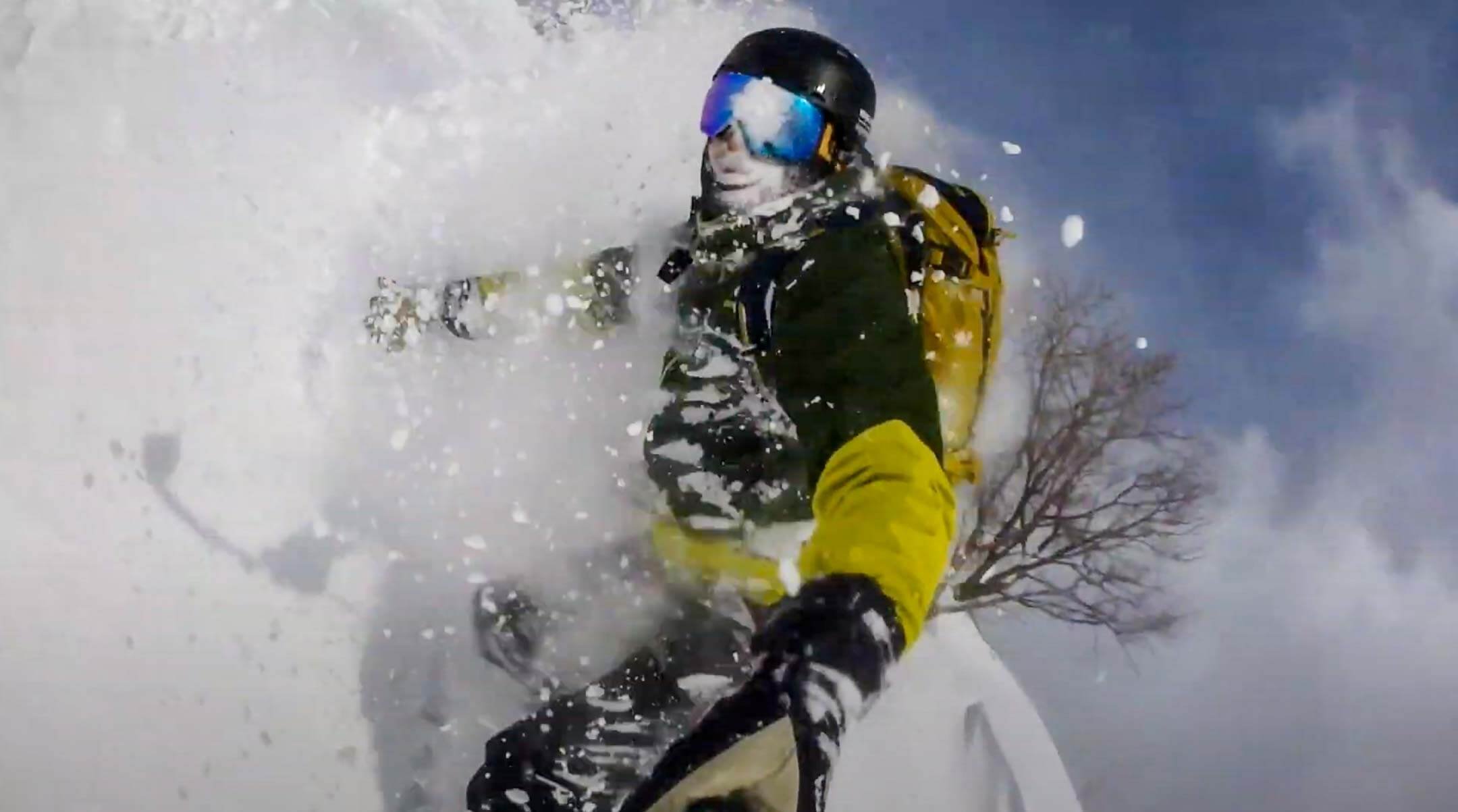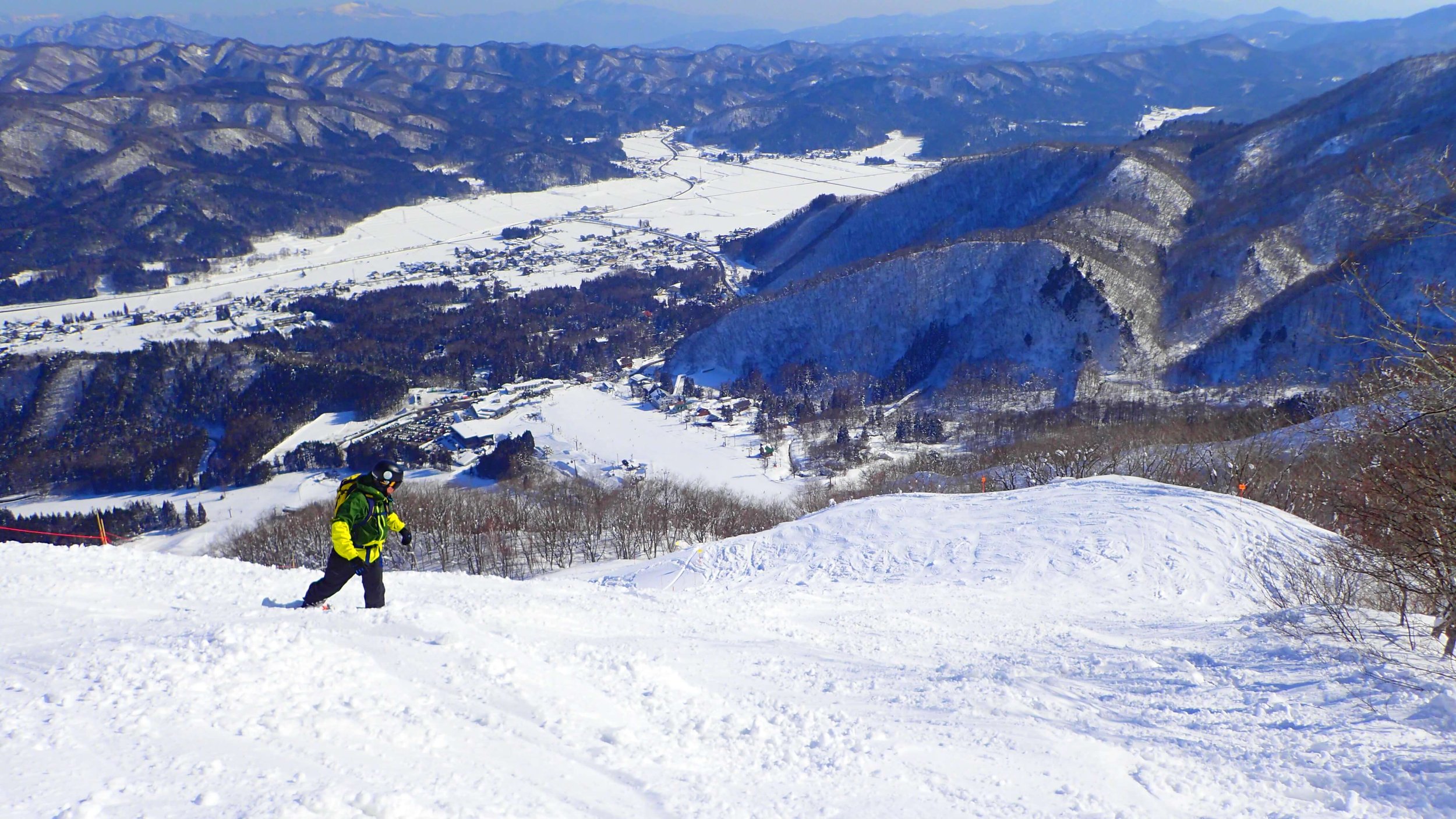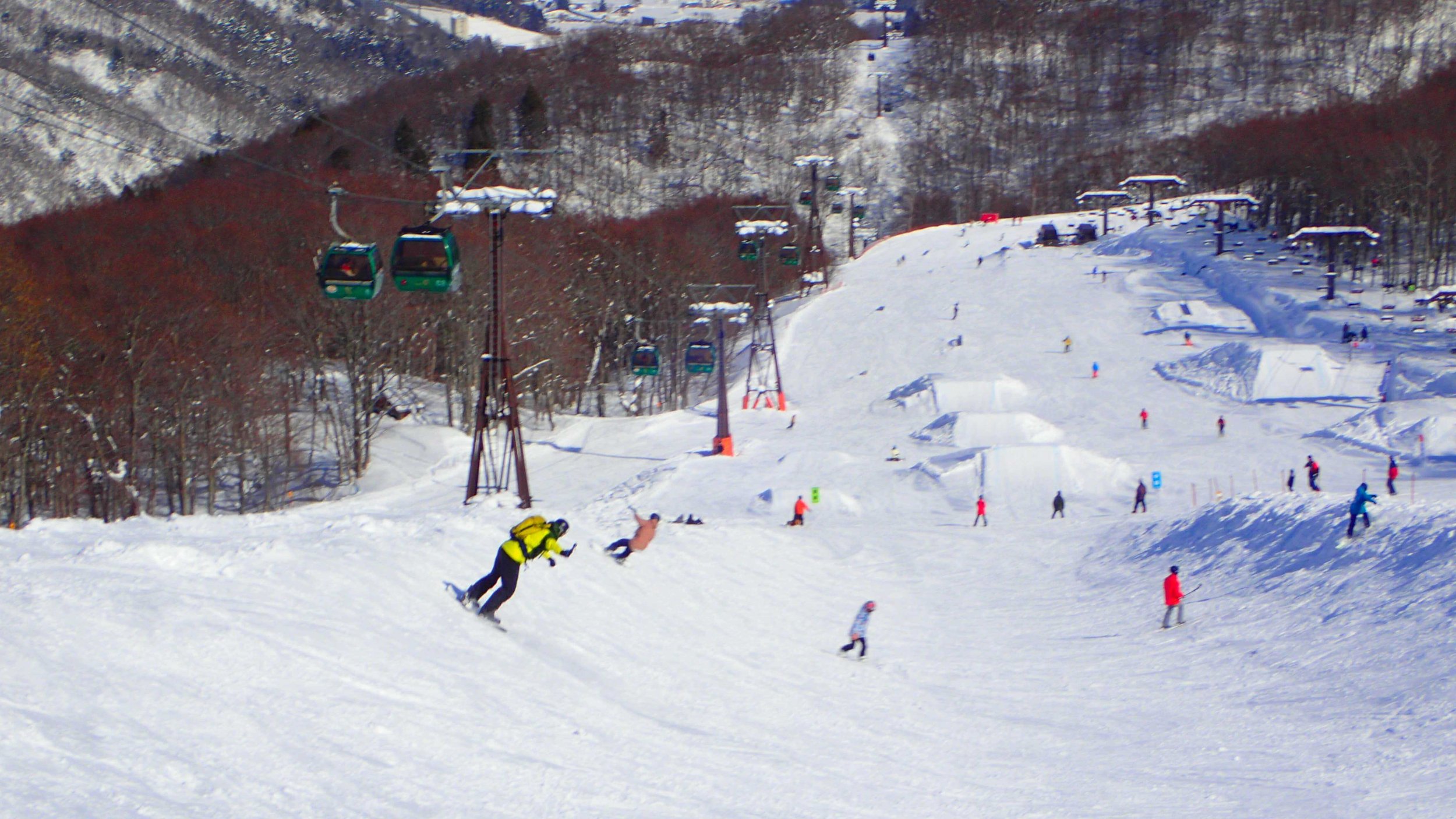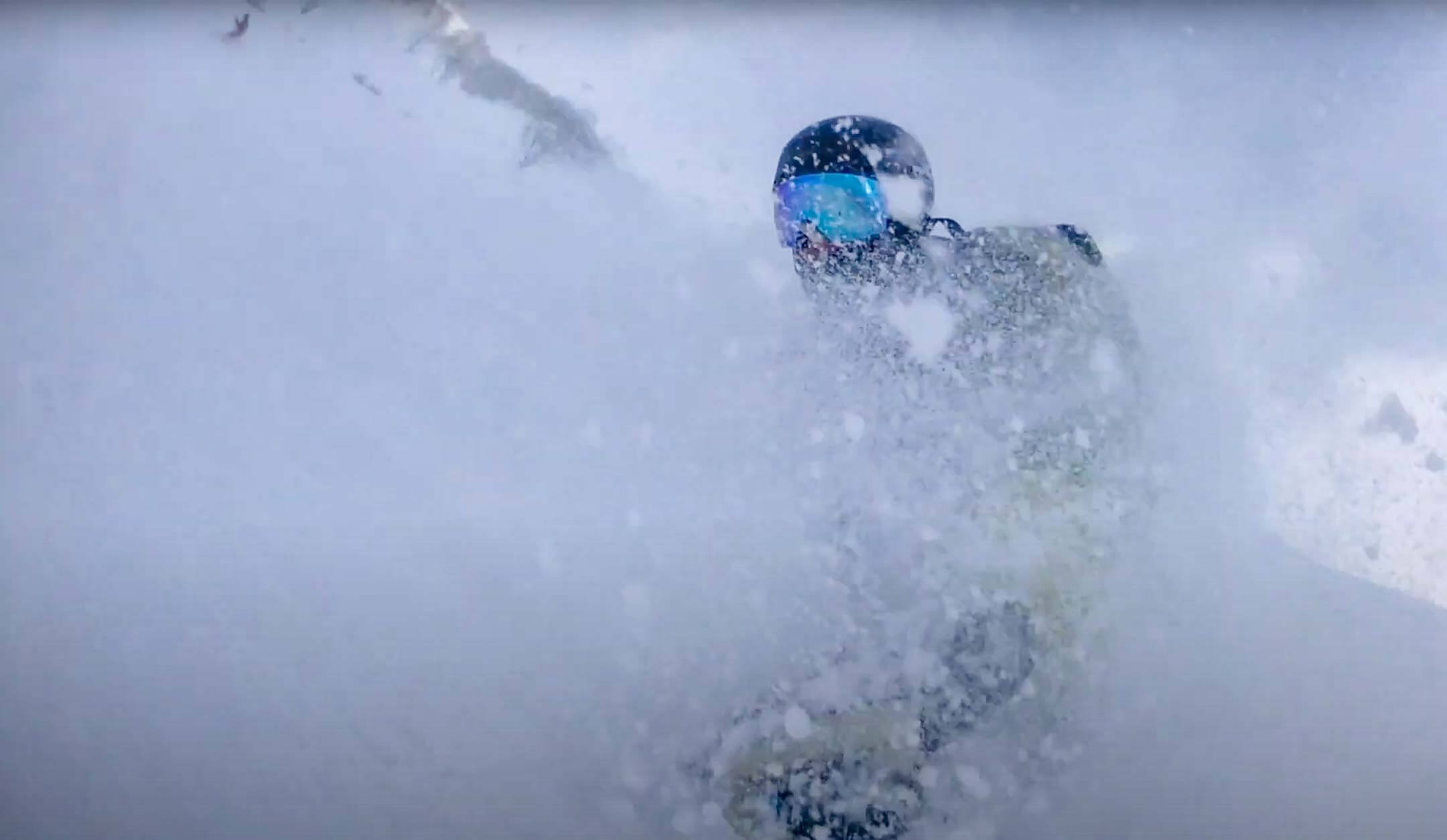A Guide To Snowboarding In The Hakuba Valley Japan
When people are writing lists of their dream ski and snowboard experiences Japan is never far from the top. The Hakuba Valley and its 10 unique ski areas may just be amongst the most sought-after ski experiences in the world. Nestled within the heart of the Japanese Alps, the Hakuba Valley has rightfully earned its reputation as a premier destination for skiers and snowboarders seeking pristine powder, breathtaking landscapes, and a unique cultural experience. If you're a winter sports enthusiast looking for your next adventure, here's a comprehensive guide to skiing in the Hakuba Valley.
Powder Days at Hakuba Cortina ski resort
HAKUBA’S MAIN INGREDIENT
When choosing your ski destination there is one really important ingredient that surpasses all other requirements, snow! Without snow, it’s not a ski holiday. Luckily for the Hakuba Valley, it just may be amongst the snowiest destinations on earth. Hakuba gets blanketed in fresh snow between December on April, with an incredible average of 12m per winter. This incredible snow record combined with the diverse terrain on offer within the Hakuba Valley makes it an exceptional place to ski and snowboard.
ABOUT THE HAKUBA VALLEY
The Hakuba Valley is a combination of 10 ski resorts set amongst the beautiful backdrop of the Japanese Alps. The 10 Hakuba Valley ski areas are all included on the same lift pass making it really easy for skiers and snowboarders to navigate the different resorts. The real beauty of this combined ski area is found in the variety of the terrain, ensuring that everyone, expert through beginner has somewhere suitable to ski for their ability.
IF YOU FIND VALUE IN THIS POST CONSIDER CLICKING THE BUYMEACOFFEE LINK BELOW TO SUPPORT MY CONTENT
GETTING TO THE HAKUBA VALLEY
The Hakuba Valley is located on Japan’s main Island Honshu. Easily accessible from the major cities of Tokyo and Nagoya, there are options to visit Hakuba by train, bus, or private car. The closest airport to the Hakuba Valley is Tokyo’s Narita airport where you can catch a direct coach or the fast trains via Nagano.
TRAIN
Popular with many visitors to Japan a trip on the fast Japanese railway is well worth doing. From Tokyo, you will want to board the Hokuriku Shinkansen (Bullet Train) destination, Nagano. This section of the journey takes 1.5-2 hours.
In Nagano transfer train to the Oito Line destination Hakuba Station. This one-hour train ride drops you in the centre of Hakuba where regular buses run. From here it is also possible for many accommodations to collect you.
When travelling by train be sure to take advantage of the luggage transfer option direct from Tokyo Airport to your Hakuba accommodation. Baggage transfer can be arranged via the counters in the arrivals area and normally takes 24 hours. Expect to pay around 2000 yen per bag but this is weight dependent.
BUS
The easiest least fuss way to reach Hakuba is by bus directly from the airport terminal. Services are available from both Tokyo Narita and Tokyo Haneda Airports. I booked with Nagano Snow Shuttle who I would recommend. The service provided by Nagano Snow Shuttle was excellent with coach transport into Hakuba Echoland and small mini bus transfers direct to my apartment.
BEST TIME TO VISIT THE HAKUBA VALLEY
The ski season in the Hakuba Valley typically runs from December to April. The region receives abundant snowfall, making it a haven for skiers. The best time to visit is usually January and February when the snow is at its peak, and the conditions are perfect for skiing.
SNOW CONDITIONS
The primary reason snowboarders flock to the Hakuba Valley is the exceptional quality of snow. The area receives a generous amount of snowfall from late November to early April, creating the perfect canvas for shredding the slopes and finding freshies in the epic trees. The peak snow conditions are typically seen between mid-December and mid-February. During this time, the valley is blanketed in a thick layer of powder, offering the best opportunity to score some Japow! The Hakuba Valley has an average snowfall of 12m per season with the resorts of Tsugaike and Cortina benefiting the most.
CROWDS AND ATMOSPHERE
The winter months of December and January tend to attract more tourists due to the ideal snow conditions. While this is great for the vibrant atmosphere and the chance to meet fellow snowboarding enthusiasts, it also means more crowded slopes and busier accommodations. If you prefer a quieter experience with fewer people, consider visiting in late February or March. These months offer a good compromise between great snow conditions and a more serene environment. You can always get away from the crowds in Hakuba with resorts like Sanosaka which are far further from the main village and the mega-resort of Happo One.
WEATHER CONSIDERATIONS
While the Hakuba Valley is renowned for its consistent snowfall, weather conditions can still influence your snowboarding experience. January tends to be the coldest month, with temperatures potentially dropping to sub-zero levels. On the other hand, March offers milder weather, longer daylight hours, and a higher chance of bluebird days, which are perfect for capturing stunning photos against the backdrop of the Japanese Alps.
EVENTS AND FESTIVALS
To add an extra layer of culture to your snowboarding trip, consider timing your visit with one of the valley's events or festivals. The Hakuba Snow Festival, typically held in February, features spectacular light displays and cultural performances. This provides an opportunity to immerse yourself in the local culture while taking a break from the slopes.
EARLY VS LATE SEASON
The beginning and end of the snowboarding season in Hakuba each have their own appeal. Early season, from late November to early December, offers the chance to catch the first powder runs of the year. While the snow cover might not be as deep as later in the season, you can take advantage of fewer crowds and sometimes discounted rates on accommodations and lift passes. The late season, from late March to early April, brings warmer temperatures and the potential for spring skiing conditions. It's a great time for enjoying sunny days on the slopes and taking advantage of end-of-season deals.
In conclusion, the best time to visit the Hakuba Valley for snowboarding largely depends on your preferences and priorities. If you're seeking pristine powder and a vibrant atmosphere, the heart of the winter season from mid-December to mid-February is your ideal window. However, if you value quieter slopes, milder weather, and potential cultural experiences, late February to March might be more your speed. Whichever time you choose, the Hakuba Valley promises an unforgettable snowboarding adventure amidst breathtaking natural beauty.
HAKUBA VALLEY SKI RESORTS
The Hakuba Valley in Nagano, Japan, is a paradise for ski and snowboarding enthusiasts, boasting a collection of ten diverse and captivating ski resorts that together form the Hakuba Valley Pass. This pass offers visitors access to an array of slopes, terrains, and experiences, making it a sought-after destination for winter sports enthusiasts from around the world.
When visiting the Hakuba Valley you can base yourself at one resort or make the most of the Hakuba Valley ski pass to visit as many of them as possible. Here is an overview of the ten Hakuba Valley ski resorts but if you require more information please check out the resort guides.
HAPPO ONE SKI RESORT
Happo-One is the largest and most famous resort in the valley, renowned for hosting downhill events during the 1998 Winter Olympics. With over 1,000 meters of vertical drop and a wide range of runs catering to all skill levels, it's a popular choice for both beginners and advanced skiers. Its bustling village features numerous accommodations, restaurants, and après-ski options.
Happo is the most popular ski resort in the Hakuba Valley and as such can fall foul of crowding during peak periods. Happo One ski resort offers the closest access to the village amenities so is the hassle-free option for Hakuba Valley skiing.
Happo One is famous for its backcountry terrain with many skiers and snowboarders alike visible from the highest lifted point heading into the backcountry.
HAKUBA GORYU SKI RESORT
Hakuba Goryu snow resort offers an ideal blend of terrains for all levels, from gentle slopes for beginners to challenging steeps for advanced skiers. The resort is also famous for its family-friendly atmosphere with Goryu village and base area a great place to stay for families. Its interconnected slopes with Hakuba 47 allow skiers to explore a variety of trails and enjoy stunning panoramic views.
Hakuba Goryu is easy to access from the main Hakuba Village with regular bus services available from Echoland, Hakuba station and the Bus Terminal. The majority of the terrain at Hakuba Goryu is best suited for beginners however, there are some challenging areas such as the adventure course.
HAKUBA 47 WINTER SPORTS PARK
Adjacent to Goryu, Hakuba 47 boasts exceptional snow conditions and a reputation for its excellent tree skiing and powder zones. It's a haven for freestyle skiers and snowboarders, thanks to its extensive terrain park with various jumps, rails, and features.
Hakuba 47 is linked to Hakuba Goryu so you can ski between the resorts throughout the day. Hakuba 47 is best known for its large terrain park which is one of the best in the Hakuba Valley. Hakuba 47 has a dedicated tree-riding zone so be sure to sign up for the Double Black Diamond Club when you arrive at the resort.
TSUGAIKE KOGEN SKI RESORT
Tsugaike Kogen is known for its vast area and long, wide slopes that cater primarily to beginners and intermediates. Its serene mountain environment and abundance of ski-in, ski-out accommodations create a tranquil experience. The upper areas provide more challenging terrain for those looking to improve their skills.
Tsugaike is a freeride haven with some of the best tree-skiing possible in the Hakuba Valley. To access the Tsugaike tree area called the DBD (Double Black Diamond) you must attend a free safety course. Tsugaike gets dumped on and this makes the tree skiing at Tsugaike some of the best in the area. Head to Tsugaike to chase powder turns without crowds.
IWATAKE SNOW FIELD
Iwatake Snow Field is an excellent choice for families and beginners, offering gentle slopes and relaxed surroundings. The panoramic vistas of the Northern Alps add to the resort's charm. It also features the Iwatake Snow Park for those interested in terrain park features.
Iwatake is a mere 10 minutes from the Hakuba station so accessing the resort is easy using the free shuttles. Once dropped at the gondola, Iwatake has mellow slopes on the lower mountain and more challenging terrain on the upper mountain. The best skiing and snowboarding at Iwatake can be found in the four tree areas near the SkyArc restaurant. From here you can find powder stashes for days after fresh snow.
HAKUBA CORTINA SKI RESORT
Cortina is celebrated for its heavy snowfall and stunning alpine scenery. Its challenging and varied terrains, including gladed areas and steep descents, make it a favourite among advanced skiers and snowboarders. The off-piste opportunities and deep powder runs are highlights of this resort.
Hakuba Cortina is more open-minded regarding its tree skiing than other Japanese resorts with no safety course needed to make the most of its wooded areas. Cortina tree-skiing is considered amongst the best in the world so it is no longer a secret. You may need to wait in line to score those Cortina powder turns but I can assure you it is worth the wait.
Make sure you take the backcountry run from the top lift that heads through the trees and across to the neighbouring ski resort Hakuba Norikura Onsen. This run was not just a favourite of my trip but also one of my favourite runs at any ski resort.
NORIKURA ONSEN SKI RESORT
Norikura Onsen is a quaint resort known for its natural hot springs and relaxed atmosphere. While it offers a mix of trails for different skill levels, it's especially suitable for those seeking a tranquil skiing experience away from the crowds.
Norikura really is the essence of what Japanese skiing should be. This local-focused resort has resisted the urge to pander to international tourists maintaining an authenticity lost in busier Hakuba ski resorts. The local area at Norikura Onsen is varied enough to keep the family entertained, with boarder cross, half pipe and a moguls course added for fun!
KASHIMAYARI SKI RESORT
Kashimayari stands out for its serene setting and excellent snow quality. It caters to a wide range of abilities with a mix of groomed trails and off-piste options. The resort's focus on nature and relaxation is perfect for families and those looking for a peaceful escape.
Kashimayari is disconnected from the main Hakuba village meaning accessing the resort takes longer and there are less frequent services. Although this may sound like a negative it actually plays into Kashimayari’s favour as if you make the journey you will be certain to have a more serene experience.
HAKUBA SANOSAKA SNOW RESORT
Hakuba Sanosaka is favoured for its family-friendly environment and affordable pricing. The resort's slopes cater mostly to beginners and intermediates, and its relaxed atmosphere is perfect for those seeking a laid-back skiing experience.
The views from Sanosaka over Lake Aokiiko are a highlight of snowboarding at Sanosaka. The views combined with empty pistes ensure that Sanosaka will remain one of my Hakuba highlights.
Lake down trail at Sanosaka is one of my TOP 5 HAKUBA VALLEY SKI RUNS.
JIGATAKE SKI RESORT
Jiigatake offers a more off-the-beaten-path experience, with fewer crowds and a focus on natural beauty. While its ski terrain is limited compared to larger resorts, it's a great option for those looking to enjoy the tranquillity of the mountains and explore less-travelled slopes.
WHERE TO STAY IN HAKUBA
With the variety of ski resorts and village bases on offer in the Hakuba Valley where to stay can become quite the headache. In the next section of the Hakuba Valley Guide, I will provide you with an overview of the main areas you could stay at on your visit to the Hakuba Valley.
HAKUBA VILLAGE
The central hub of the valley, Hakuba Village offers a mix of accommodations, dining options, and entertainment. This area is perfect for those who want easy access to the slopes as well as the convenience of nearby amenities. Hakuba Village provides a good balance between the buzzing energy of a resort town and the tranquillity of the mountains.
By staying in Hakuba Village you guarantee good transport links to all Hakuba Valley ski resorts and shops and amenities within walking distance.
HAPPO ONE
Happo-One is not only a popular ski resort but also a prime location to find lodging. Offering a variety of ski-in/ski-out accommodations, it's an ideal base for skiers and snowboarders who want to maximize their time on the slopes. The area boasts stunning views of the iconic Happo-One mountain and is surrounded by cosy restaurants and shops.
Staying at Happo One provides direct access to Hakuba’s largest ski area. The downside to residing in this area is that you will find it busier, but for some this will be a positive with access to plenty of bars and restaurants.
GORYU & 47
These interconnected resorts provide a wide range of accommodations suitable for families, couples, and solo travellers. With convenient access to the slopes and a friendly atmosphere, Goryu and Hakuba 47 are great choices for those looking for a relaxed stay while still having plenty of outdoor activities at their doorstep.
By staying close to Goryu and Hakuba 47, you guarantee close access to two ski resorts within the Hakuba Valley with accommodation within walking distance from the lifts. Additionally, ski resorts elsewhere in Hakuba have fantastic links to Goryu & 47 so if you want to be able to access all resorts but from a quieter village, this could be your best option.
ECHOLAND
If you're seeking a vibrant après-ski scene and a variety of dining and entertainment options, Echoland is the place to be. Situated just a short distance from the ski resorts, this area offers a mix of boutique hotels, guesthouses, and lodges. It's a fantastic option for those who want to unwind after a day on the slopes with lively nightlife and a diverse culinary scene.
Echoland is ideal for those who want to be amongst the thick of the action. Whether it is access to the resorts, buzzing bars or access to western or local cuisine, Echoland makes a fantastic base.
TSUGAIKE KOGEN
For a quieter and more secluded experience, Tsugaike Kogen provides a serene atmosphere away from the bustling crowds. The accommodations here range from traditional Japanese ryokans to modern lodges. This area is ideal for those looking to connect with nature and enjoy a peaceful escape.
Basing yourself in Tsugaike can feel disconnected from the main Hakuba Village however, this is overcome by being in the midst of the best powder in the valley. The area close to Tsugaike and Cortina gets the best snow in Hakuba and as such staying here means you are closer to being first in the lift lines.
CORTINA
If you live for deep snow, consider staying near Cortina. Known for its heavy snowfall, this area attracts avid skiers and snowboarders looking to explore the Cortina tree runs. Cortina offers limited accommodations, but its unique terrain makes it a must-visit destination for serious winter sports enthusiasts.
If searching out powder is your only concern than staying at Cortina could represent a good option. Cortina is linked to Norikura via slopes so it is possible to ski at both resorts. Furthermore, Cortina has good links to Tsugaike meaning Tsguapow is around the corner.
The negative to staying in Cortina is that you will have less choice in accommodation and fewer options for food and activities after the lifts have closed.
No matter where you choose to stay in the Hakuba Valley, you'll be treated to breathtaking scenery, incredible snow conditions, and warm Japanese hospitality that will make your trip unforgettable. Remember to book your accommodations well in advance, especially during the peak winter months.
IF YOU FIND VALUE IN THIS POST CONSIDER CLICKING THE BUYMEACOFFEE LINK BELOW TO SUPPORT MY CONTENT.
APRES SKI AND ACTIVITES
Away from the world-class skiing and snowboarding Japanese culture is a major attraction for skiers to visit the Hakuba Valley. Après ski in the Hakuba Valley may look different to what you may be used to in European ski resorts… Let's take a dive into Japan’s after-ski culture.
ONSENS
One of the highlights of après ski in Hakuba is the opportunity to soak in the region's renowned onsens (natural hot springs). The warm, mineral-rich waters provide the perfect way to soothe tired muscles and reinvigorate the body. Many accommodations in the area feature private or communal onsens, where you can immerse yourself in the serene ambience of snow-covered landscapes while enjoying the therapeutic benefits of the water.
DINING OUT
Hakuba's après ski scene also features an array of dining options that cater to diverse palates. You can savour traditional Japanese cuisine, including hearty bowls of ramen and fresh sushi, or opt for international flavours. It will sound uncultured but I think I had the best Kebab of my life (Samurai Kebab) in Hakuba which was just what I needed at the time.
One of my favourite things about the Hauba Valley is the many snack stalls at the base of each resort, there is always a vendor offering something incredible for the pallet.
Crepe bought at Goryu base area.
BARS AND CAFES
The drinking scene in Japan is not the same as in Europe but don’t let that fool you into thinking it doesn’t exist. There are hundreds of bars and restaurants in the Hakuba Valley with a good mix of everything, including a hidden speakeasy in a cigarette vending machine.
During my time in the Hakuba Valley, I enjoyed the atmosphere and food at Blizzard before heading to Happo One For Night Skiing and the foot onsen bar at the base of Tsugaike. Both of these spots are completely contrasting so there will always be somewhere to fit your mood!
CULTURAL EXPERIENCES
For those interested in delving into Japanese culture, Hakuba offers a chance to explore beyond the slopes. You might engage in traditional tea ceremonies, learn about local crafts, or even participate in snow festivals that celebrate the magic of winter. I enjoyed exploring various temples around the village as well as visiting the Snow Monkeys.
FINAL THOUGHTS
Snowboarding in the Hakuba Valley is one of the highlights of my life, not just my snowboard journey. The rich blend of incredible snow, interesting resorts, and an ancient culture moulded this into a unforgettable experience.

















